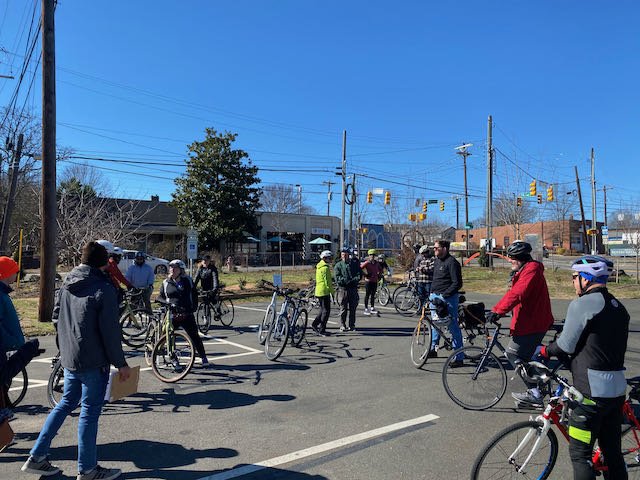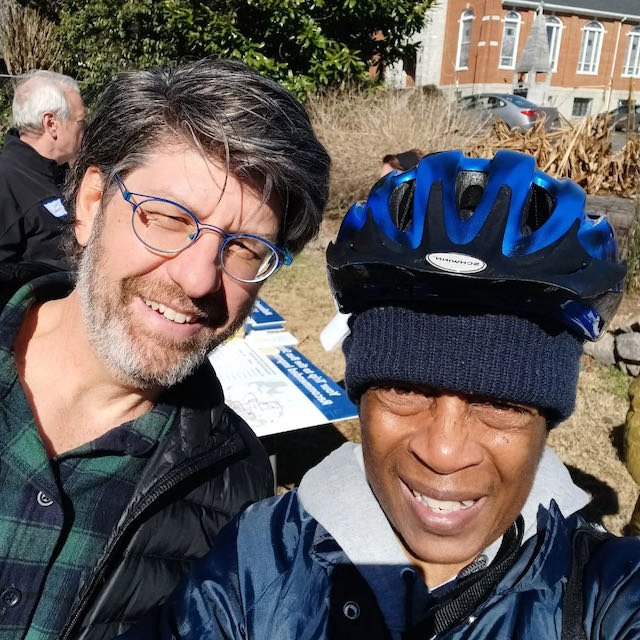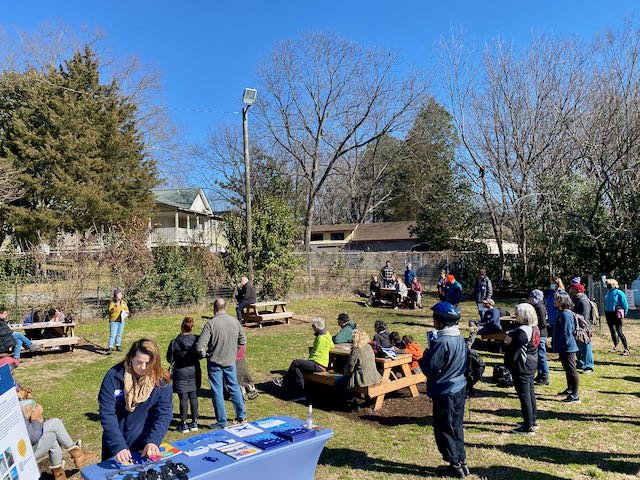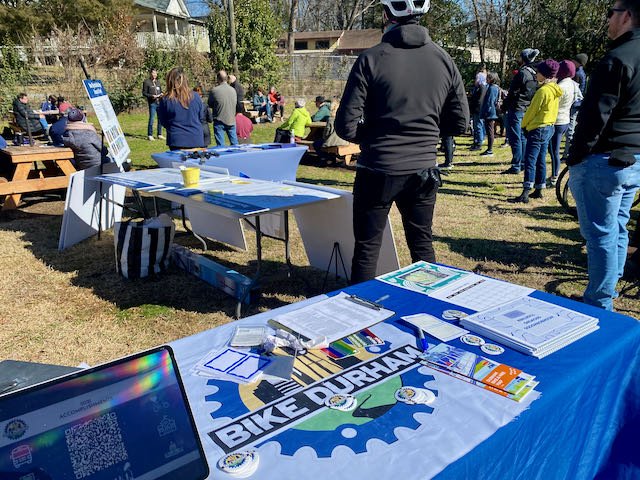In 2025, we had many significant advocacy wins:
Continuation of fare-free bus service on GoDurham
City adoption of its first Vision Zero Action Plan (a priority since 2022)
Funding for design of the two-way conversion of Roxboro and Mangum Streets and the study of strategies to slow speeds on Duke and Gregson/Vickers Streets
Launched monthly Advocacy Meet-ups to provide more hands-on volunteer opportunities
Organized the biggest Open Streets event in Durham’s history - Move-A-Bull City
We also participated in the League of American Bicyclists’ federal lobby day advocating for continued funding of sidewalks, bicycle facilities, and trails as well as other traffic safety legislation. This summer we participated in a BikeWalkNC state lobby day for the first time, advocating for the repeal of legislation that prohibits spending your tax dollars collected by the state on projects to build sidewalks or bicycle facilities unless a road is being widened.
We also turned out in force to shape the recommendations on:
street re-striping projects,
bike lane protection projects,
sidewalk/multi-use path projects,
Bus rapid transit projects and plan,
the Bike/Walk Plan update, and
the city’s Unified Development Ordinance.
This is a lot to be proud of, yet there is much more to do.
In November, more than two dozen gathered at our Community Meeting or our Advocacy Committee meeting to discuss priorities for 2026 to build on our success.
These priorities are:
Re-energize Safe Streets Durham, a Durham-wide alliance of residents, business owners, and organizational leaders advocating for changes to make our streets safe for everyone.
Focus for 2026 will be on the Roxboro and Mangum Streets campaign to convert them to two-way travel. We have chosen this campaign because this project already has momentum, but it will need an organized push to get a good design approved by NCDOT and funded by the City. If we can’t get these streets right, we’re going to have an even harder time getting busier NCDOT-maintained streets changed to a safe design. This campaign will require:
Defining design priorities that we believe will make the corridor safe for all users
Organizing residents, business owners, and employees to understand their desires and concerns and to identify leaders, supporters, and detractors
Working with leaders to mobilize supporters when we need to pressure the City or NCDOT to approve and fund our priorities
Working with volunteers to continue pressuring the local governments to make changes that will accelerate project delivery
Win long-term funding commitments to keep GoDurham bus service fare-free, to make all bus stops accessible, and to continue improving service frequency
Focus for early 2026 will be on getting the City, the County, and regional agencies to commit transit sales tax revenues that are already being collected to cover the estimated cost of fare-free service ($2-$2.6 million per year)
We will also grow this into an alliance of residents, business owners, and organizational leaders who support a multi-year campaign for better service and accessibility throughout Durham.
To grow our cadre of volunteer leaders, we will create an advocacy training program to prepare residents to effectively engage with public processes, speak with decision-makers, organize their neighbors, lead a quick-build traffic calming project, etc.
To engage our community, we will also build on last year’s Advocacy Meet-ups with monthly service projects (e.g., bike lane/bus stop cleanups, trail maintenance, walk audits, traffic calming demonstrations).
Finally, we are considering how best to engage with other organizations to win change at the state and federal levels. We will look for ways to leverage our local campaigns to make the changes at NCDOT, the General Assembly, and in Congress that will be necessary to make Durham’s transportation system safe, affordable, and sustainable for everyone regardless of who they are or where they live.
If you’d like to learn more about how you can get involved with any of these advocacy priorities, please fill out the volunteer interest form with the button below.

















